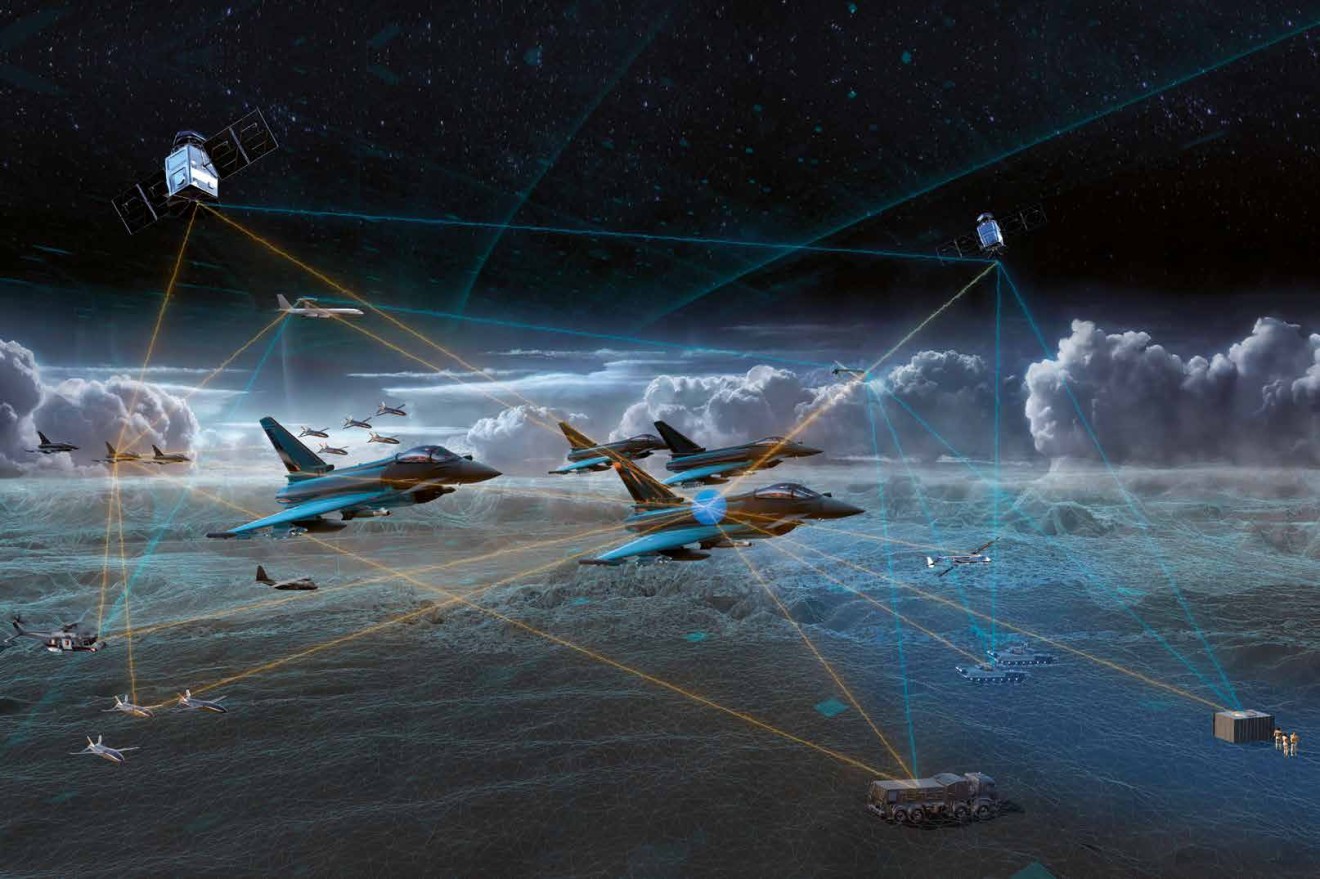What do you see as the main emerging threats for Western governments?
There has been a proliferation of high-end threat systems, which previously would have been the preserve of peer states. There’s been an increasing trend towards the spread of triple-digit Surface-to Air-Missile (SAM) systems, high end electronic warfare equipment and radars to countries like Iran, and plenty of others.

Justin Bronk
These states are buying equipment which presents a threat level which we’d have considered as characterising high intensity warfighting in previous decades. Clearly the ground-based threats are increasing. Russia in particular is continuing to pursue improvements in missile performance for both SAMs and in the air-to-air domain. It is also focusing on improving and broadening the range of different detection and tracking technologies that cue in those weapons. It’s going to get harder and harder to remain unseen, and the kinematic threats that are then cued in when you are seen will continue to improve in range and agility
Your research paper says that while Western air forces have got used to very low attrition rates in recent decades, there’s significant potential for this situation to be reversed.
When you look at the systems which make up so-called anti-access area denial or A2AD bubbles, they’re sophisticated and long-ranged enough that Western forces will take losses in degrading those capabilities. A2AD tends to be something which can impose attrition on the attacking force, delay it and increase the timescales and political appetite required to push on. The flip side is that there are plenty of techniques that you could deploy to start supressing those defences and in the long term A2AD tactics are unlikely to actually stop a determined force. Politicians tend to overestimate the capabilities of high end air defences and see them as an impregnable shield. They’re not. They only become an impregnable shield if you’re not politically willing to risk losses. mSo there’s an issue around how you square it with political risk. For a lot of nations, the serious prospect of taking losses will result in a greatly reduced political willingness to use force. Of course, if we find ourselves in a high intensity conflict against a peer then that’s a different ball game, we have no choice but to engage. Then it’s a question of how credible and sustainable your force is.
You talk about the decline of the technical edge that Western forces have long enjoyed; can you explain how that manifests itself?
It’s basically a combination of Russian defence spending, particularly on ground based air defences after a 15-20 year gap, with the emergence of China as a potential peer competitor in technological terms. It’s a trend that is going to accelerate.
It’s not necessarily that the West has become worse at designing or procuring things, rather that for a while we were the undisputed masters of the game because other people weren’t really trying to catch up. So in a sense it’s the erosion of a massive technological and operational advantage lead, in terms of the way we did things and how we linked them up. But that was fairly artificial because it was the result of some very specific geostrategic circumstances in a set period of time.
We’re simply moving back to the natural status quo — which is a constant game of evolution between attack and defence in ground and air threats, and weapons systems. The 1990s and the 2000s were a bit of an aberration and Western air forces were able to reign unchallenged. Now we’re having to relearn old lessons. But the problem is that the mechanisms by which we develop, procure, design, pay for and value air power at a political and industrial level have unavoidably changed within those 20 years. Procurement timescales and attitudes to attrition have been conditioned by those two decades. They’re better suited to a time when the competition was from allies for exports, rather than a serious set of kinetic threats. Frankly, we need a much more rapid pace of iterative development, as well as a more serious look at forces in the round.
It’s not enough to say ‘Well we have the best individual platforms,’ it’s a question of whether they are credible in the whole force terms. Are they supportable? Are they adequately dispersed? Can we protect them on the ground? Are there enough weapons stockpiles to actually prosecute any sort of meaningful campaign? All of these things which we used to be very good at in the Cold War, and which have withered over 20 years.
It’s a challenging scenario you’ve set up, talk me through some of potential solutions.
There are good arguments for another manned programme and there will continue to be a lot of relevance and usefulness to be gained out of the current generation of manned platforms, like Eurofighter Typhoon, for a long time to come.
However, if you accept the argument that those solutions alone are not going to give you an answer to the combat mass/attrition problem, you’re going to have to add something more in there. And, of course, that something more is going to have to be paid for.
For me, the numbers don’t really add up in terms of what we’re prepared to spend and what we expect to lose (for European air forces in particular), to think that manned platforms alone offer a viable way forward long term.
The idea that makes most sense is a UCAV force capable of autonomous operations in contested airspace, within a new force mix. The manned force would be able to carry out many of the low intensity and discretionary taskings, with the UCAVs forming the leading edge and attrition sponge against very high risk threats. It would have to be something you could manufacture in enough numbers and reasonably rapidly.
Obviously in recent months we’ve heard about the ambition for two different FCAS programmes in Europe. What’s your view on these?
It’s not necessarily a terrible idea to have two competing programmes at the early stage, that way you don’t get a single myopic view that takes you down one design philosophy route which may not be the optimal outcome. But at a certain point down the road, ideally no later than when you’ve got a couple of flying prototypes, then you really need to merge those programmes.
I just don’t think the European market is large enough for two competing programmes to be viable in terms of production and competition for exports. And frankly, the operational requirements in Europe are not so different that a mutually suitable platform, or series of platforms as a system, could not be arrived at.
How do you see an evolving Eurofighter platform potentially fitting into this future force mix?
I think the airframe/engine combination that forms the basis of Eurofighter Typhoon is a strong one, particularly in terms of its potential for evolution to fulfil the sort of combat mass in discretionary conflicts and standoff roles needed in high intensity conflicts. It will be relevant for a long time to come.
It will be a very valuable part of any mixed force, particularly because of its ability to supply a lot of munitions, as well as having a lot of potential power for future electronic warfare packages. It can operate at high altitudes with reasonably long endurance, loiter time and range, so it’s a very useful capability. And it’s proven. There’s a lot of strength in the design. I think its future evolution will be predicated on being quite realistic about the Eurofighter’s strength and limitations.
You talked as well earlier about its inherent flexibility being one of its core strengths that will keep it relevant, can you expand on this?
Typhoon’s design philosophy means it’s inherently flexible and capable (because of its specific excess power, its thrust to weight ratio, its payload capacity and high altitude performance, especially with a big radar aperture). So I’d say it’s a very useful support tog a cutting edge very low observable, eyes-forward platform, which by definition would have limited internal capacity and be available in limited numbers. One good option to allow Typhoon to better support the eyes further forward role in future might be to increase the missile carriage capacity, as Boeing has done with the latest F-15 variants.
What other technical areas, do you think, would it need to build on to keep it relevant?
I think building on the work which the RAF has done very successfully, in conjunction with BAE Systems with the TyTAN programme (the maintenance construct) to keep driving operating and maintenance costs down will be critical because the sticker price is only one element of what a nation looks at for in its force planning. How much it actually costs to run and own through its life is much more important than the upfront fly-away cost of the jet.
As an interested observer, how optimistic or otherwise are you about the future generally — how do you feel personally about the challenges and our fitness to face them?
I’m reasonably confident that technically speaking, it is within the capability of the European defence industry to meet future needs, however they choose to go about it. I’m fairly convinced that there is the technical capability within the funding available to come up with decent solutions.
I am less convinced there is the political focus and will behind these efforts to actually agree on and support everything required in the timelines needed. That’s more of a concern.
